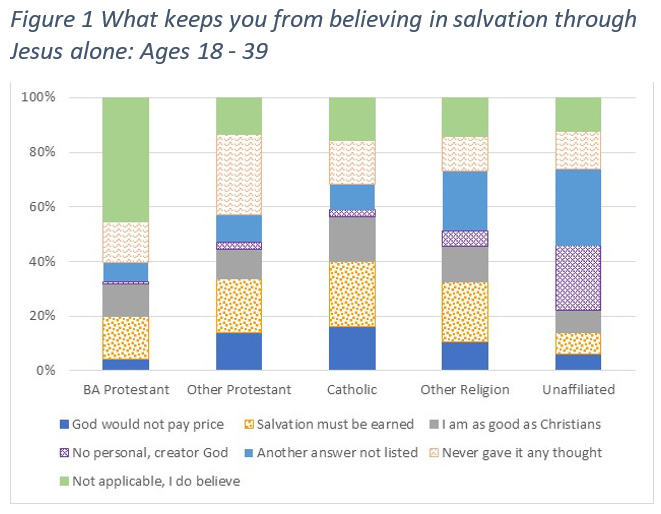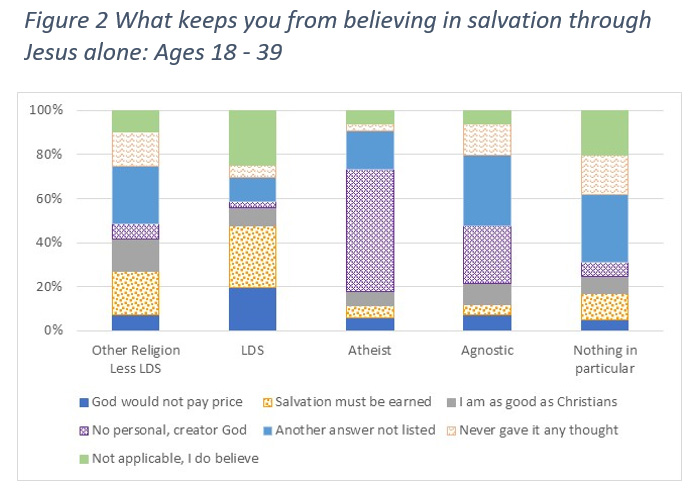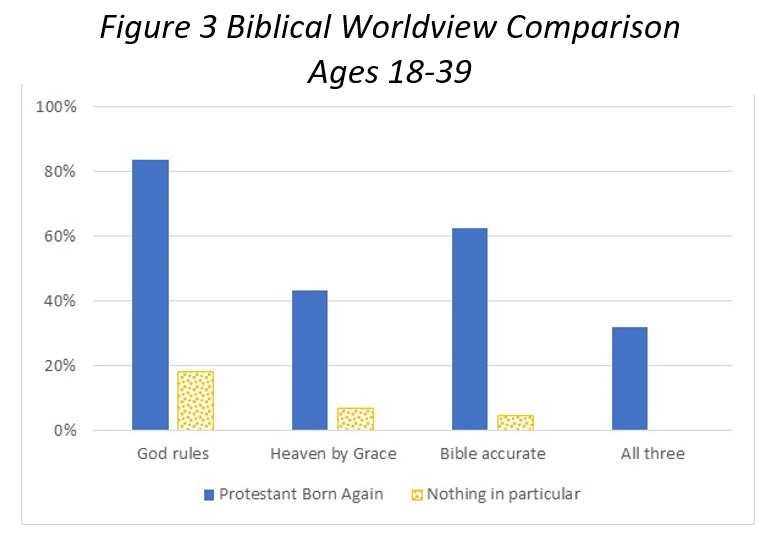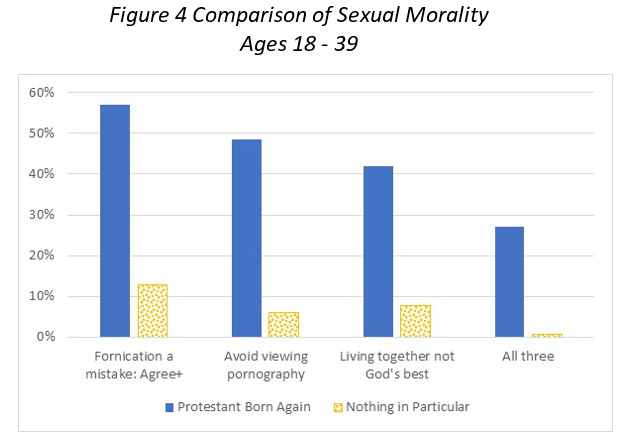Sue Bohlin explores elements of a way of looking at life that provides a biblical world and life view.
What Is a Worldview?
A young Christian couple I know married with high hopes for the future. Within three years they were divorced; the husband handled his hatred for his job by snapping at his wife and retreating to online gaming, and the wife shut down her heart to him and opened it to someone else.
 In her book Total Truth, Nancy Pearcey tells of a Christian lawyer whose job was to find loopholes in the contracts with clients his law firm wanted to get rid of—that is, which enabled his company to break promises.{1} She tells another story of a Christian who worked at an abortion facility and never saw any conflict between the Bible she studied and its command not to murder.{2}
In her book Total Truth, Nancy Pearcey tells of a Christian lawyer whose job was to find loopholes in the contracts with clients his law firm wanted to get rid of—that is, which enabled his company to break promises.{1} She tells another story of a Christian who worked at an abortion facility and never saw any conflict between the Bible she studied and its command not to murder.{2}
This disconnect between biblical teaching and the way it’s lived out is not just an American problem. Many African Christians go to church on Sundays and pray to Jesus for healing or prosperity, but when He doesn’t answer the way they wanted, they go to the village witch doctor.
All these people profess to be Christ-followers and agree that the Bible is the Word of God, yet they don’t view reality or live out their lives as if Jesus were Lord and the Bible is true. They don’t have a biblical worldview. They don’t “think Christianly.”
Nancy Pearcey writes, “‘Thinking Christianly’ means understanding that Christianity gives the truth about the whole of reality, a perspective for interpreting every subject matter.”{3} It means we learn to interpret everything in light of its relationship to God. The title of Nancy’s book, Total Truth, reflects her premise: that Christianity is not just a collection of religious truths, it is total truth. Thinking Christianly—which equips us to then live out a biblical worldview—means we understand that natural and supernatural are seamlessly woven into one reality.
Our worldview is like an invisible pair of glasses through which we see reality and life. If we have the wrong prescription, the wrong beliefs and assumptions, what we see will be fuzzy and undependable. If we have the right prescription, we will see things as they are. The prescription of these glasses consists of our beliefs and the things we assume to be true. These beliefs and assumptions comprise the filter through which we experience and interpret life. And we all have a filter.
For example, let’s say you walk into a Walmart and discover you are their zillionth customer. Balloons drop, strobe lights go off, and you are handed a $1000 gift card, a trip to Disneyworld, and the keys to a new car. Your worldview will determine how you interpret that event. If you believe in fate, you will think, “It’s my lucky day! The stars are shining on me!” If you believe in only this physical, material universe, you will think, “Nice, but it’s a totally random and meaningless occurrence.” If you believe that Jesus is Lord over everything, you will think, “I so do not deserve this gift of grace, but I thank You for it, Lord. How do You want me to be a good steward of this amazing blessing?”
Everyone has a worldview, even though most people aren’t aware of it. We believe a biblical worldview is the right prescription for both living and understanding life.
Creation, Fall, and Redemption
My friend Dr. Jeff Myers of Summit Ministries says, “[A] person’s worldview is his default answers to life’s most pressing questions: Where did I come from? How should I live? What happens when I die?, and How do I know my answers to these questions are true?”{4}
We all buy into an overarching story that explains much of why things are the way they are. For example, people who believe in traditional folk religion (animism) believe there are spirits connected to every physical item and event and place, and this way of looking at life shapes their response to the things that happen in life. People who embrace pantheism—a view of life that sees everything connected as part of a divine but impersonal force with no personal God and no distinctions between good and evil—will respond differently.
If we draw our worldview from the story of God’s dealing with mankind from the Bible, a helpful way to structure it is terms of creation, fall, and redemption. They answer the big three universal questions: Where did we come from? Why are things so messed up? How can it be fixed? Everything that exists and everything that happens falls into one of these categories.
Creation answers the question, where did we come from? as well as a basic philosophical question, why is there something rather than nothing at all? God created us in His image for the purpose of having a relationship with us, and He created the universe and our world as well. This explains the exquisite design we see in the human body, right down to the molecular machines inside cells. Creation explains why the earth is so finely tuned for life—just the right distance from just the right kind of star and the right kind of moon, just the right temperature for liquid water, just the right kind of atmosphere for us to breathe.
The relational God, whose very being consists of Father, Son, and Holy Spirit, created us in His image to draw us into the circle of divine mutual love and fellowship and delight. The reason we are here is so God could lavish love on us by sharing Himself with us and inviting us to participate in the divine life. That explains why we are so relational, and why we need and enjoy other people. It explains why we are hard-wired to be spiritual—because He made us for Himself, and He is spirit. He created the universe and our planet as an expression of His love and glory, and because physical people need a physical place to live. A beautiful God creating us in His image explains why we love beauty in the world, in art, in music, and in every other expression of human culture.
The Fall answers the question, what went wrong? Adam and Eve’s rebellion against God brought sin into His marvelous creation, resulting in brokenness, blindness, and nothing working the way it did in the perfect, pre-fall world. The fall explains why death feels so unnatural, why there is suffering and sickness. It explains why there is moral evil like murder, rape and theft, and why there is natural evil like earthquakes and tsunamis and tornadoes. Many people are angry at God at these things. But they are all effects of the fall. He didn’t create the world this way; we’re the ones who messed it up. This fallen world breaks His heart far more than it breaks ours.
The good news is Redemption. God is working to set things right and restore His damaged, distorted creation. This explains why our souls long for justice, for the wicked to face the consequences of their evil choices, and for things to be fair and right. A just God will fulfill our longing for justice. He will make the wrongs right and the shattered whole. Good will triumph over evil once and for all. God’s promise of restoration explains why we still long for the perfection of Eden, even while we live immersed in a world and relationships that are far from perfect: He’s going to bring it back. The Lord Jesus Christ, who came to earth as fully God and fully man, living as one of us and then dying in our place, rising again, and ascending back to the Father’s right hand, promises He is making all things new (Rev. 21:5). God’s got a plan and He’s working it!
Living in Two Worlds
One of my favorite things to do is go snorkeling in the crystal clear waters of the Caribbean. When I’m wearing a mask and a snorkel tube, I can float on the water’s surface and enjoy the beautiful fish and corals that live in the underwater world. But I can also breathe air from the above-water world. When I’m snorkeling, I get to enjoy two worlds, two spheres of life, at the same time.
This is a picture of what it looks like to live out a biblical worldview. Paul exhorts us to focus “not [on] the things which are seen, but at the things which are not seen; for the things which are seen are temporal, but the things which are not seen are eternal” (2 Cor. 4:18). We live in a physical world, but looking at life biblically also means living in awareness of the unseen, eternal spiritual reality that also surrounds us. Many believers make the mistake of living as if they were functional naturalists—as if the material, physical world were all there is.
Thinking biblically means staying aware and focused on the spiritual and eternal part of life, letting that guide our interpretation of physical and temporal events. That doesn’t mean dismissing or denying the physical, living like some sort of ascetic who refuses to engage with the world; we just keep it in perspective.
I believe this is what the Lord Jesus intended when He said to “seek first the Kingdom of God” (Matt. 6:33). The physical world is so in-your-face about its reality—especially when we get tired, hungry, thirsty every day—that we don’t have any trouble being aware of this sphere of life. But focusing on (or even just staying aware of) the unseen, eternal part of life, like donning snorkel gear and going face-down in the water, allows us to function in both worlds at the same time. Next time you’re in a group where people share prayer requests, pay attention to how many of them are in the physical realm: health, finances, jobs, etc. These things are important, but according to Jesus’ priorities, the Kingdom —the unseen realm where He is Lord—is more important. I wonder what would happen if our prayer requests started reflecting this priority?
The seventeenth century monk Brother Lawrence lived out an important spiritual discipline he called “practicing the presence of God.” When we do this, we are able to process the heartbreak of living in a fallen world and the apparent unfairness of what looks like evil winning. When we read what the prophet Habbakuk wrote, and what Asaph recorded in Psalm 73, we see what it looks like to remember that God is sovereign, and He is able to make all things work together for good for those who love God and are called according to His purpose (Rom. 8:28). It helps us see all people as beloved image bearers for whom Christ died, even the jerks who cut us off in traffic. It helps us remember that what may feel like a bizarre random event may actually be the attack of spiritual warfare. It helps us balance our now-fallen feelings, which were impacted by the Fall like everything else, with the truth of God’s word. For example, one Christian woman filed for divorce from her husband with no biblical grounds, claiming that it must be okay since she didn’t feel “convicted by God.”
Thinking biblically means cultivating an awareness of the spiritual realm: the eternally important things, and the activity of God, angels, and demons. It’s like going through life wearing snorkel gear!
Refusing the Sacred/Secular Split
Have you ever heard someone saying something like, “Well, I personally oppose abortion, but I would never say that it’s wrong for anyone else because that’s a private issue.” Or, do you give ten percent of what you think of as your money to the Lord because that’s His portion? Do you think of your spiritual life as time spent reading the Bible and going to church, but the rest of the week is yours? One of the ways Christians fail to live out a biblical worldview is when we buy into the false division of the sacred and the secular.
Thinking biblically means not only believing that Jesus is Lord at the moment of our deaths, but He is also Lord over every aspect of our lives and every aspect of His creation. He created this world, He owns it, He entered it, and He redeemed it. He created us in His image, and then commanded us to take the salt and light of our image-bearing influence into every aspect of life: business, science, law, education, politics, and art, to name a few. The “Creation Mandate” is found in Genesis 1:2:
God blessed them; and God said to them, “Be fruitful and multiply, and fill the earth, and subdue it; and rule over the fish of the sea and over the birds of the sky and over every living thing that moves on the earth” (emphasis mine).
Let’s look at some examples:
• I’ve had a freelance calligraphy business for thirty years. Beyond showing honesty and integrity in my business dealings, there is also value in the beauty I bring into people’s lives through my hand lettering as a reflection of God’s beauty.
• All of my husband Ray’s education is in biology. He lives out his biblical worldview by seeking to explore and understand God’s creation through science, then explaining it to others in a way that gives glory to God.
• Christian educators who express a biblical worldview are teaching about God’s world and God’s truths whether they mention Him or not. Whether it’s the glorious patterns of mathematics or the themes of great literature, the Lordship of Christ ties it all together.
• My son’s undergraduate education was in art, and we loved seeing how he wove his biblical worldview into his art pieces. He suggests that a Christian artist has the opportunity to express both the brokenness of life in a fallen world as well as the hope and redemption found in Christ.
• Christians in law can live out their biblical worldview by using their knowledge of the law to create protection for the weak and defenseless, to criminalize criminal behavior, and to codify making restitution, all of which are biblical values.
One element of living out a biblical worldview is refusing to compartmentalize life into our religious activities and then everything else, as if spiritual truth and concepts were unrelated to how we live our lives. One of my dear friends has lived in moral and emotional purity for three years after repenting of her lesbian relationship. The temptation can be strong some days, but she consistently chooses Jesus over her feelings. One day her supervisor, who goes to a large church, asked if she were gay. My friend replied that she used to claim a gay identity, but she’s been emotionally and sexually sober for three years. Her supervisor asked why, and my friend said, “Because it’s sin! It’s not God’s design or intention.”
“Oh, it’s not sin!” her supervisor cheerfully assured her. “God wants you to be happy! You just need to find the right girl and settle down.” My friend is living out a biblical worldview; her Christian supervisor , who most definitely does not, relegates the Bible to religious topics that don’t intersect with where the rest of life is lived. (Not only that: the Enemy used the supervisor’s lies and wrong beliefs to harass my friend as part of an all-out spiritual warfare attack.)
Jesus is Lord, and He loves and provides for His creation through people, whether we are delivering milk or delivering babies, serving in the military or the government, growing corn or managing hedge funds, raising our family or even serving in ministry. It’s all God’s work and we get to share in it (1 Cor. 3:9). Just as we can’t divide colors into sacred and secular, we shouldn’t do it with the rest of life either.
Processing Life Through a Biblical Worldview
I said earlier that a worldview is like a pair of glasses that is comprised of our beliefs and assumptions through which we see and interpret life. My husband, Ray, and I got a chance to put our biblical worldview into practice a few years ago when someone ran a red light and slammed into his car. He sustained a concussion but, miraculously, no cuts or scratches or broken anything. It took almost a year for him to recover from both the impact on his body and the mental fuzziness of his concussion.
As we processed this accident and the difficulties that unfolded from it, we experienced the wisdom that comes from interpreting life according to the truth of God’s word. Other worldviews would have interpreted this experience differently:
• Naturalism, the belief that the physical world is all there is, and there is no spiritual or supernatural component to life, would say, “Ray was in a car wreck, but there’s no meaning to it. It was just another accident; everything is an accident without purpose. Whether he survived or had been killed, ultimately that wouldn’t make any difference anyway since all of life is a random, meaningless existence.”
• Pantheism, the belief that all of life is a spiritual reality and the physical world is an illusion, would say, “Ray, his car, the other driver, and her car, are all part of ‘the one,’ the unifying essence of the universe. All of these particulars are an illusion, since there is only one reality where everything and everyone is divine.” And since many pantheists also share many of Eastern mysticism’s beliefs, we would hear, “Ray must have done something terrible in a previous life to have experienced this trauma in this life. He was working off his bad karma from an earlier existence.”
• Traditional folk religion (Animism), the belief that the spirit world is constantly manipulating life in the physical world, because there is a spirit or spiritual force behind every event, might say, “Ray must have made some spirit angry with him. He needs to say some magic words or burn some incense or build an altar or do something to get the angry spirit to not be angry with him anymore.”
Since we seek to make the truth of God’s word the pair of glasses through which we view life, our filter includes the question, what does God say about this? Together, we practiced responding to this trauma according to our Christian worldview.
The most important truth was that God exists, and He has revealed Himself to be all-powerful and all-knowing. That means that getting “t-boned” was not a random accident that just happened. We reminded ourselves that He was still sovereign; a loving God was in control, even though He allowed Ray to get hit and his car totaled by a driver without insurance. God is all-powerful and could have prevented the accident, but for some reason He didn’t. We determined to trust Him even though He wasn’t explaining Himself.
This was a very bad car wreck, and the witnesses couldn’t believe he wasn’t killed instantly. Instead, he was protected from serious injury. We have thanked God many times for His amazing protection that resulted in 100% recovery.
Ray experienced very real pain and suffering, but we know from the Bible where that comes from: the fall of man is responsible for most pain and all suffering. He was not troubled by the possibility that his suffering might be meaningless because there was no one “up there” or “out there” giving meaning to it, like the view of life that atheists and agnostics have to face.
Ray’s car wreck had a special impact on me. At the time, I was dealing with my fear for my son’s safety since he was about to enter the Air Force during a war. Because Ray’s car wreck happened just three blocks from home, God impressed on me that His protection has nothing to do with geography. The best place to be, the safest place to be, is in God’s hand, and He has promised that no one can snatch us from His hand (John 8:28-29). I sensed Him impressing me that I could trust Him with my son the same way He protected my husband from lasting damage.
I hope this article helps you grow in your ability to think biblically so you can see life as it really is—one reality comprised of both the physical and spiritual, God’s world, God’s life—that He invites you into.
Notes
1. Nancy Pearcey, Total Truth: Liberating Christianity from Its Cultural Captivity (Wheaton, Ill.: Crossway Books, 2004), 31.
2. Ibid., 97-98.
3. Ibid., 34.
4. Email from Dr. Jeff Myers, April 19, 2011.
© 2011 Probe Ministries


 To get a better understanding of what drives these results, we dove further into the makeup of each of these two groups. The results are shown in Figure 2.
To get a better understanding of what drives these results, we dove further into the makeup of each of these two groups. The results are shown in Figure 2. Let’s compare the results for Born-again Protestants and those who claimed to be Nothing in Particular. As shown in Figure 3, for each of the questions those agreeing with a biblical worldview among the Nothing in Particulars is a small fraction of those among Born-again Protestants. When we combine the three questions together, we see one out of three Born-again Protestants vs. no NIPs. Certainly, some of these NIPs came from an evangelical background, but none of them interviewed in our survey ascribe to a basic evangelical worldview as adults. As noted in our first report, one in three orn-again Protestants is a disappointing percentage ascribing to these biblical worldview questions, but it is certainly dramatically better than the Nothing in Particular group.
Let’s compare the results for Born-again Protestants and those who claimed to be Nothing in Particular. As shown in Figure 3, for each of the questions those agreeing with a biblical worldview among the Nothing in Particulars is a small fraction of those among Born-again Protestants. When we combine the three questions together, we see one out of three Born-again Protestants vs. no NIPs. Certainly, some of these NIPs came from an evangelical background, but none of them interviewed in our survey ascribe to a basic evangelical worldview as adults. As noted in our first report, one in three orn-again Protestants is a disappointing percentage ascribing to these biblical worldview questions, but it is certainly dramatically better than the Nothing in Particular group. The results from our survey are shown in Figure 4. Once again, we see a large difference between these two groups. Clearly, the NIPs do not ascribe to a biblical view on sexual morality. The majority of Born-again Protestants do not ascribe to those beliefs either, but a significant minority of them do.
The results from our survey are shown in Figure 4. Once again, we see a large difference between these two groups. Clearly, the NIPs do not ascribe to a biblical view on sexual morality. The majority of Born-again Protestants do not ascribe to those beliefs either, but a significant minority of them do.